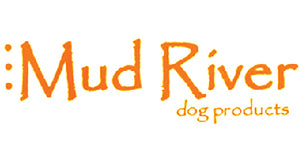Lumps and Bumps: Warts in a Puppy’s Mouth What are those bumps?
A “wart” is an abnormal growth of tissue and can occur just about anywhere on the body. Canine oral papillomas are warts that are caused by a papillomavirus. While there are numerous strains of papillomaviruses, canine oral papilloma virus (COPV) is the most common strain and is benign (not harmful). When COPV infects tissue and replicates, it causes abnormal tissue growths on mucous membranes that range in appearance from small white/pink bumps to unique lumps with fronds. Oral papillomas typically occur in bunches or clusters rather than singular growths and are most common in the mouth and on the lips. Occasionally, COPV warts occur in unusual locations.
How did my dog get COPV?
Unfortunately, COPV is relatively easy for pups to share with each other; the infectious virus is released directly from warts. Dogs spread COPV through both direct contact, as when greeting or playing with each other and by indirect contact, like shared toys and feeding dishes Usually, a dog is infected a month or two prior to the development of visible warts. An infected dog could potentially spread virus to other dogs shortly prior to visible wart development. COPV also survives for short periods of time in the environment where infected dogs have visited, particularly in cooler locations.
Is it contagious?
Yes, this virus is absolutely contagious, though fortunately not to people or to other species. Papillomaviruses are species-specific, i.e. dogs only infect dogs. While technically dogs with suppressed or underdeveloped immune systems are most at risk, any dog without previous exposure to the disease is at risk. COPV infection is not routinely seen in dogs over 2 years of age.
How are COPV warts diagnosed?
When a dog of the right age and stereotypical lesions are present, most veterinarians will feel comfortable diagnosing COPV based on the physical appearance of warts during a physical exam. If growths appear atypical for any reason, a biopsy may confirm diagnosis. Follow-up exams every few weeks are recommended to keep a close eye on the warts, ensure resolution, and monitor growths for sign of infection or pain.
How do I help protect my dog from COPV?
To prevent a young dog from becoming infected is complicated by the fact that a protective vaccine is not available. It’s best to keep puppies away from dogs with visible warts and continue separation for at least a month after warts have cleared. Wash and disinfect all toys/bowls/bedding frequently. Avoid crowding environments when possible. Once a dog has cleared COPV, they are considered immune to reinfection. This does not confer immunity to other strains of papillomavirus.
Is there a way to treat COPV warts?
In general, this virus needs to run its course. Treatment/intervention strategies are warranted only in extreme cases. In a typical dog, warts will last for about 6-8 weeks. Once the immune system fights the infection, the warts die and fall off. Thankfully, warts are not painful unless traumatized or infected. In extreme cases, surgery or other therapeutics may be needed.
When can a dog with COPV be considered safe from infecting others?
Generally, about a month after warts have completely resolved, a dog is clear to return to all activities. If a dog must be housed with other dogs while still infected, contact only with adult dog housemates of good health are at the lowest risk of susceptibility to COPV. It’s best to get the “all-clear” from your veterinarian before returning to potential social situations. Please avoid taking potentially sick, aggressive, or immunocompromised pets to pet parks, boarding/grooming facilities, or other community gathering events without first consulting with your veterinary team. This is for the safety of both your pets and the community.
### Amanda Burow, D.V.M. (Dr. B), is a graduate of Iowa State University’s College of Veterinary Medicine. Dr. Burow’s patient list includes hunting dogs of all varieties, as well as several field trial dogs and full time sporting guide dogs. In addition to practicing general veterinary medicine, she has special interest in the areas of preventive care, emergency medicine, and dermatology. In her spare time, she enjoys being outdoors and on the lake, staying active, reading, and spending time with family and friends. Mud River is proud to share these tips from Dr. B with our customers. Keep in mind it is best to work with your local veterinarian to determine the needs for your animals.







